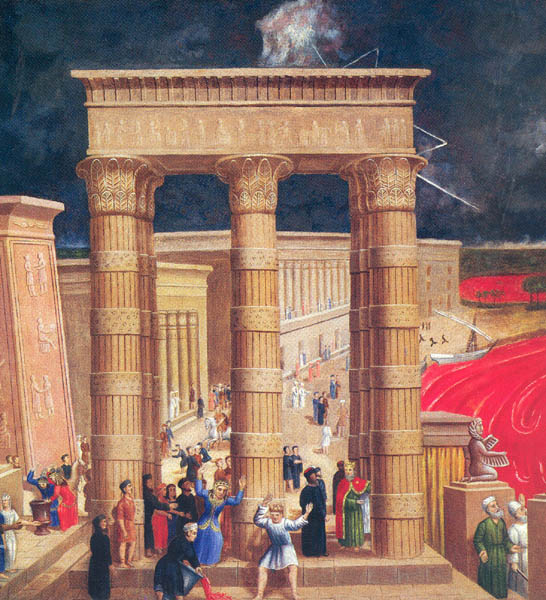Image Details

National Gallery of Art, Washington/Gift of Edgar William and Bernice Chrysler Garbisch
“He turned their waters into blood,” by the 19th-century American folk painter Erastus Salisbury Field (1805–1900).
In this portrayal of the first of the plagues inflicted on the Egyptians, the Nile flows a deep, bloody red, astonishing the populace. Moses and Aaron, his rod in hand, stand at lower right. Pharaoh, next to the rightmost pillar, seems to implore his magicians to do something. At bottom center an Egyptian empties a water pitcher that has also been filled with blood.
The scene is a literal depiction of Exodus 7, verse 19: “The Lord said to Moses, ‘Say to Aaron, “Take your rod and stretch out your hand over the waters of Egypt, over their rivers, their canals, and their ponds, and there pools of water, that they may become blood; and there shall be blood throughout all the land of Egypt, both in vessels of wood and in vessels of stone.” ’ ”
One understanding of the plagues explains them as expressions of natural events. Powerful rainstorms south of Egypt could have swept red clay into the Nail from the Ethiopian highlands, setting off a chain reaction that led to the first six plagues; other natural events can account for the last four plagues. A second view of the plagues sees them as attacks on the pantheon of Egyptian gods. Accordingly, the first plague—turning the waters of Egypt to blood—is directed against one of several gods associate with Nile or with water.
